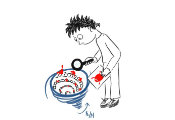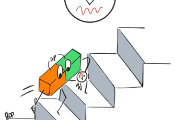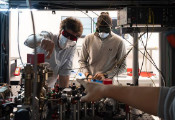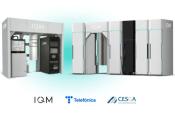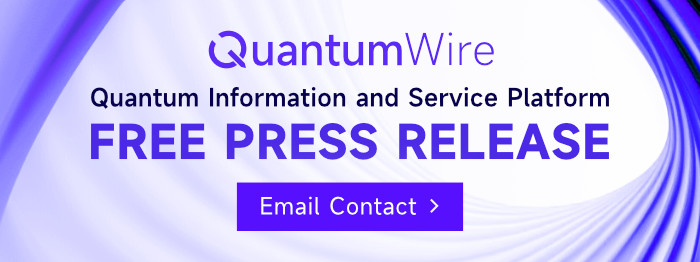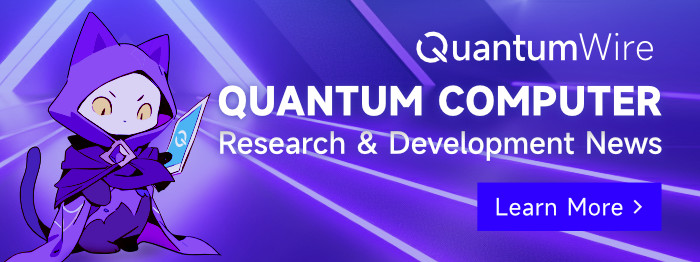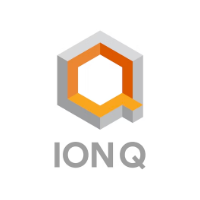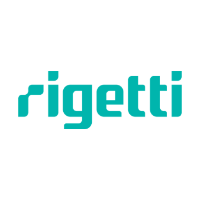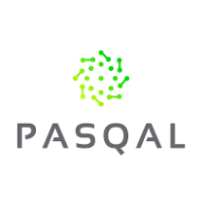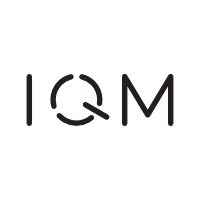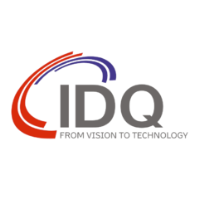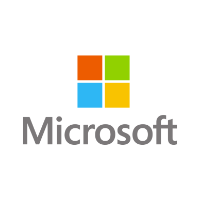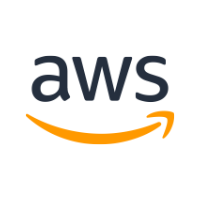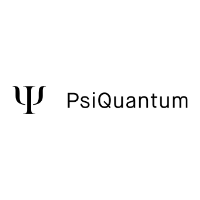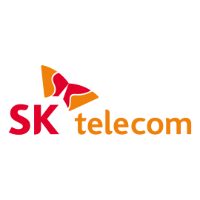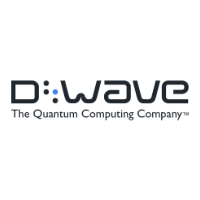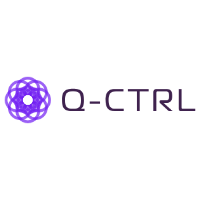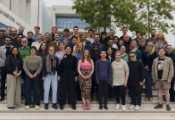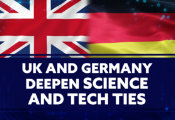At Cisco, Bold Steps Towards a Quantum Network
August 01, 2025 -- With its tremendous potential in computing, the quantum realm has been studied in research centers for many years.
But Cisco’s Quantum Lab — and its newly announced quantum entanglement source chip — go beyond research.
For Cisco, it’s all about bringing the mysterious power of quantum to bear on practical technologies. That is, solutions that could help solve critical global and industry challenges — and bring them to the marketplace faster than anyone now expects.
“The promise of quantum computing is immense,” said Reza Nejabati, head of Cisco’s Quantum Labs. “Imagine rapid drug discoveries, cutting-edge materials science, precise weather forecasting, highly efficient energy storage, and giant leaps forward in AI. Quantum computing could help us solve some of humanity's most pressing challenges.”
But quantum’s impact won’t be felt unless the technology is easily accessible, interoperable with today’s “classical” computers and fiber-based networks, and protected against next-gen quantum security threats.
“We want to ensure the technology we develop is practical in terms of cost, complexity, and scalability,” Nejabati added, “so these benefits can be realized and broadly shared across society.”
The Santa Monica-based Quantum Lab is breaking this “scaling barrier.” By innovating the fundamental hardware and software components for a quantum network and data-center interconnect — starting with its low-energy, room-temperature quantum entanglement chip — it promises to speed the arrival of practical quantum computing from decades to five or even three years.
Vijoy Pandey, general manager and senior vice president of Cisco’s Outshift incubation and innovation engine, summed up the company’s quantum strategy.
“Instead of waiting for huge monolithic quantum computers,” he said, “we are building the quantum network to connect smaller quantum processes together into a distributed system, potentially accelerating the timeline for practical applications.”
It’s an approach that plays to Cisco’s unique strengths, according to Zeus Kerravala, principal analyst with ZK Research.
“Mirroring its foundational role in the internet's infrastructure,” Kerravala said, “Cisco is well positioned in building a vendor-agnostic, quantum-networking framework and developing crucial technologies like its entanglement chip. This approach leverages Cisco's historical strength in networking to connect diverse quantum platforms, accelerating the practical realization of quantum computing without customers having to bet on a single technology.”
Concrete solutions from ‘spooky’ quantum actions
But what is entanglement, and what would a quantum network look like?
Einstein called quantum entanglement “spooky action at a distance,” while Pandey compared it to magic. By any measure, it’s a mystifying phenomenon.
In “classical” computing, binary digits, or bits, are represented by ones and zeros. But quantum computers employ quantum bits, called qubits. In qubits, the ones and zeros are represented by quantum particles like ions or photons. And those quantum ones and zeros are superpositioned. That is, able to exist in different states at the same time. Even spookier, quantum particles can become entangled. That is, their states become corelated and connected, regardless of distance.
By leveraging such phenomena, quantum computers can potentially crunch vast potential outcomes simultaneously — compared to the classical model, which “only” switches between ones and zeros, one at a time. Beyond that, entangled particles can transfer or share information, across any distance, via a phenomenon straight out of Star Trek, known as teleportation.
“The beauty of it is that photons or other particles could be separated physically, even by a large distance,” explained Ramana Kompella, head of Cisco Research and a distinguished Cisco fellow. “Entanglement actually allows us to transfer quantum information through the teleportation phenomenon.”
Making it all work, in the real world
As Kompella further stated, transferring qubits across a network doesn’t just require entangled photons — it requires lots of them.
“The first step to actually transferring quantum information is to distribute these entanglements,” he said. “And each qubit will consume one entangled photon pair. That means if you want to transfer millions of qubits, you need millions of entangled photons.”
That’s where the quantum entanglement source chip comes in. Pandey called it, “the first building block of a quantum network.” And Nejabati outlined its power and unique attributes.
“Our chip can generate up to 200 million pairs of entangled photons per second,” Nejabati said. “That's a very high rate. We do it by injecting laser light into our chip, which converts every single photon to two lower-energy entangled photons. And since they are entangled at telco frequency, they can be transported easily. You don't need a special transport catalyst, just a normal fiber can transfer your entangled photons.”
That compatibility with existing infrastructure is what differentiates Cisco’s quantum innovations.
“This source chip will be the foundation of our quantum network,” Nejabati added. “Our ultimate goal is to enable quantum computing to scale out.”
The entanglement source chip is but one element of the quantum network. And Cisco is already developing other key components — for example, a switch that can transport and route qubits without disturbing the entanglement properties, and a network interface card, to connect quantum computers into a quantum network.
While the current iteration of the entanglement source chip is a research prototype, its performance is extremely impressive. And industries like finance, logistics, medicine, and robotics are taking note, along with design partners to speed progress toward commercial products. Near-horizon applications could include secure quantum position verification, instantaneous decision coordination (for example, in financial trades), and ultra-precise time synchronization (for example in autonomous industry and robotics).
“An amazing feature of this chip,” emphasized Kompella, “is that its fidelity is greater than 99 percent. That means that more than 99 percent of the entangled photons it generates are usable for quantum information.”
Confirming its potential for practical applications, the chip operates at room temperature and demands very little energy — at a time when technologies like AI are placing heavy loads on servers, networks, and their energy suppliers.
“Our chip is actually quite elegant and easily deployable in data centers,” Kompella continued. “A lot of quantum technology operates at temperatures close to absolute zero. Ours operates at room temperature. So, you don’t require complicated contraptions utilizing liquid helium for those low temperatures.”
What’s more, each chip has minimal energy requirements.
“The power consumption is less than a milliwatt for one chip,” Kompella said. “That’s about the power it takes to light up a pixel on your laptop.”
Quantum threats, quantum security, and an ecosystem for the future
Of course, a powerful technology like quantum computing brings potential security threats — for example, in breaking existing encryptions. Cisco is looking ahead to meet these future challenges, some of which may have implications today. Because while quantum cyberattacks may seem a long way off, hackers, too, are looking ahead. Some may already be implementing “harvest now, decrypt later” attacks, in which data captured today could be decrypted with future technologies.
To counter such threats, Cisco’s is making Post-Quantum Cryptography (PQC) available across its various product lines. PQC is a set of quantum-resistant cryptography methods and algorithms that have been standardized by the National Institute of Standards and Technology (NIST). Additionally, Cisco supports the Secure Key Integration Protocol (SKIP) to facilitate the integration of Quantum Key Distribution(QKD) systems with Cisco routers. QKD uses quantum mechanics principles and quantum network that provide a secure way to share cryptographic keys.
“Where keys are exchanged, someone could potentially tap in and use a quantum computer to decrypt it,” said Kompella. “Now that portion can be offloaded to aQKD network, which leverages quantum mechanics properties like the no-cloning theorem. So, you can prepare for a time when an eavesdropper could try to figure out what’s in the packets. QKD is real technology that is already being deployed by some ISPs, fintech companies, and governments in their networks.”
At the same time, Cisco is helping establish a deep and varied quantum-tech partner ecosystem. It is already working with top quantum research institutions like the University of California at Santa Barbara, the Chicago Quantum Exchange, and the University of Arizona’s Center for Quantum Networks. And it’s leveraging its industry leadership to promote cooperation and universal standards for quantum, in partnership with organizations like the National Institute of Standards and Practices (NIST), Linux Foundation, and the Internet Engineering Task Force (IETF) quantum standards.
However, as quantum technologies evolve, Cisco will continue to be a prime mover, innovating critical technologies, building strong creative partnerships, and assuming important leadership roles. Like AI and other revolutionary technologies, quantum’s potential for good is vast. But it will need to be used responsibly, with widely accepted standards and guidelines, and with the cooperation and collaboration of the most brilliant minds in quantum.
“We have positioned ourselves to create these critical interconnects and build the quantum network of the future,” concluded Kompella. “But quantum is not about a single company or a single institution. It truly will take a village.”

